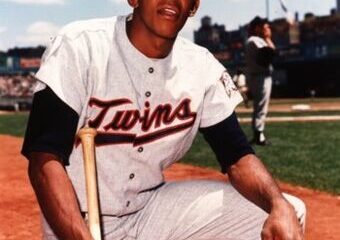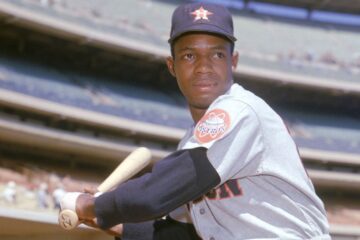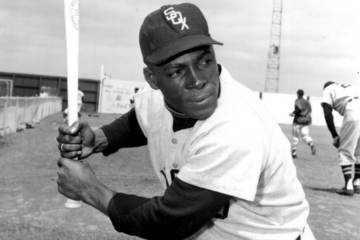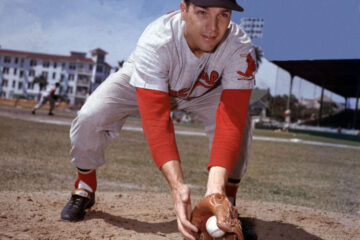The Hall of Fame Index: Who are the five most valuable left fielders?
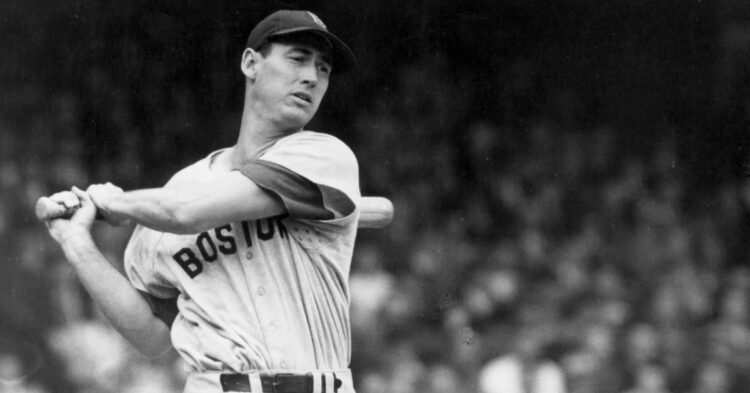
When we looked at shortstops we came up on the problem with what to do with Alex Rodrgiguez. The same problem comes up with Barry Bonds. Fortunately, the focus of the book The Hall of Fame Index Part II wasn’t who was the best or most valuable at each position. It was only about who was fit for the Hall of Fame. Yet, even that question is a difficult one. Trying to sift through the legal, moral, and ethical quagmires is enough to bring anyone down.
Yet, even compared to ARod, Bonds is a unique figure in the history of the game. He is arguably the most valuable player of all-time statistically. He is the all-time home run leader and was a brilliant defender and base runner during his younger years as well. As we will see, the obvious steroids use provided what was to be a kind of Faustian bargain. He achieved heights that no one had achieved, but it also zapped him of his speed and fielding prowess. For most of his career, that is what helped him be great.
I could go through and adjust the numbers based on our estimates of when he began using and what his career could have looked like otherwise. Sadly, we will never know. The depressing point is that players like Bonds used not to stay in the game or beat out their competition. They did it to be the very best and beloved by all. He has the numbers, but none of the rest of it as he’s become persona non grata in the game.
Career Value
| BWAR | FWAR | WS/5 | Total | |
| Barry Bonds | 162.8 | 164.4 | 140.8 | 468.0 |
| Stan Musial | 128.3 | 126.8 | 120.8 | 375.6 |
| Ted Williams | 121.9 | 130.4 | 111.0 | 363.3 |
| Rickey Henderson | 111.2 | 106.3 | 107.0 | 324.5 |
| Carl Yastrzemski | 96.4 | 94.8 | 97.6 | 288.8 |
We start off with a cleanup on aisle six. Musial presents a bit of a problem on where to put him. Technically, he played more games at first base than any other single position. However, he spent far more time in the outfield than at first base. He played nearly 150 more games in left field than he did in right field, so he gets placed there. He even played in over 300 games in center field. This will obviously come up when we look at defensive value as well.
Additionally, we have the problem we haven’t addressed in the numbers. Musial missed one season serving his country in World War II. Williams missed nearly five. It would be asinine to claim one was a better man than the other. They both served and did so honorably. Yet, we cannot deny the effect it had on career value and that one was more adversely affected than the other. Ultimately, this one of the reasons why we look at career and peak value in addition to the other numbers.
Obviously, Henderson and Yastrzemski follow in after that. While they were both great in their own right, they pale in comparison to those two and will likely stumble out of the debate for the time being. This puts a lot of the focus back on Bonds. Where exactly does he stand in the history of the position and the game? That’s an impossible question, so we treat him as he is for now.
Peak Value
| BWAR | FWAR | WS/5 | Total | Index | |
| Bonds | 88.4 | 92.5 | 77.0 | 257.9 | 725.9 |
| Musial | 84.2 | 83.3 | 74.6 | 242.1 | 617.7 |
| Williams | 82.6 | 88.5 | 75.0 | 246.1 | 609.4 |
| Henderson | 72.1 | 70.2 | 58.8 | 201.1 | 525.6 |
| Yastrzemski | 65.7 | 61.8 | 54.8 | 182.3 | 471.1 |
In 1998, Barry Bonds had 8.1 BWAR even though he hit only 37 home runs. He lost the attention battle to Mark McGwire and Sammy Sosa even though he was a more valuable player than both of them. Reportedly, that attention spurred him to begin using in earnest. He could have continued on the track he was on and gone on to become the first 500 home run/500 stolen base player in history. As we will see, that peak (which includes the steroid years) affected his all-around game as well.
The war interrupted the primes of both Williams and Musial, but robbed of Williams of at least three seasons of peak performance. If you look at the percentage statistics from his latter career, you can see he didn’t slip that much, be was more durable in the early going. It’s hard to say whether the wars had an effect on that or not. We can’t know what the reality would have been without those two wars.
What we do know is that Musial is generally the pick if you are looking for durability from season to season. If you are looking at the question of who was the very best when he was at his best then the nod typically goes to Williams. Henderson and Yastrzemski are predictably far behind even in peak value.
Offensive Value
| OPS+ | Rbaser | OW% | wOBA | |
| Williams | 191 | 5 | .857 | .493 |
| Bonds | 182 | 43 | .815 | .435 |
| Musial | 159 | 10 | .779 | .435 |
| Yastrzemski | 130 | -2 | .677 | .375 |
| Henderson | 127 | 144 | .660 | .372 |
Williams numbers are stupid. There is considerable evidence to suggest he is the most valuable hitter of all-time. Of course, that question always depends on how we measure such things. Ty Cobb won more batting titles and had an overall higher batting average during a more difficult era. Yet, if the measure of offense is in who creates more runs it is hard to ignore what Williams brought to the table. He was the perfect mixture of power, patience, and ability to hit.
As we will see in a subsequent article, Babe Ruth has a lot to say about this issue and we will ultimately compare all of the top players at the positions. It’s instructional to look at Bonds’ numbers even if we know they are chemically enhanced. Most of us remember those years, so seeing those seasons helps us understand how dominating Williams was during his prime.
Scouts pay a lot of attention to base running. Seeing Henderson here also puts a lot of this in perspective. He is inarguably the most valuable base runner in the history of the sport. Yet, in terms of runs it isn’t necessarily that much more than even a Bonds. In a 20 year career it ends up being about five runs a season over Bonds. That’s considerable when we think about how good Bonds was, but even if he were ten runs better than the typical left fielder, that is only equal to one win.
| OPS+ | Rbaser | OW% | wOBA | |
| Bonds | 207 | 15 | .840 | .473 |
| Williams | 191 | 9 | .846 | .501 |
| Musial | 173 | 14 | .810 | .463 |
| Yastrezemski | 146 | 11 | .724 | .393 |
| Henderson | 143 | 93 | .711 | .388 |
We see two things here that are definitely interesting. Bonds shoots up when we look at his best ten seasons. Those include his steroid seasons where he became the single most feared hitter in the history of the game. A part of this was the awesome power, but it was really only a small part. Bonds had mastered the art of plate discipline to a degree we have never seen in the game’s history. We also see that he wasn’t quite the base runner that he was earlier in his career. This is part of that Faustian bargain we talked about earlier.
Williams on the other hand is virtually the same hitter that he was over the course of his whole career. So, obviously, there were differences in fielding and differences in durability. Yet, it is still unique not to see a bump during one’s prime in the percentage numbers. We see it across the board with the rest of the players.
Fielding Numbers
| Rfield | DWAR | TZOF | DWS/5 | |
| Yastrzemski | 184 | 1.0 | 139 | 12.3 |
| Bonds | 175 | 7.6 | 190 | 11.0 |
| Henderson | 65 | -2.3 | 65 | 11.5 |
| Musial | 50 | -9.2 | 65 | 13.4 |
| Williams | -32 | -13.3 | -29 | 8.8 |
Williams often said he wished he had focused more on his fielding, but as we will see, he was a better fielder earlier in his career before he had his numerous injuries. Yaz spent time at first base late in his career, so his defensive value (according to DWAR) was punished accordingly. The same was true with Musial as well. Bonds stands as a unique figure in that he was a much better fielder than what we remember.
This was particularly true early in his career. We will see that when we look at peak value fielding. We took the peak value numbers from the same seasons represented in their peak value and not necessarily when they were at their best as fielders. Sometimes they end up being the same ten seasons and sometimes they don’t.
| Rfield | DWAR | TZOF | DWS/5 | |
| Yastrzemski | 126 | 5.5 | 118 | 6.6 |
| Henderson | 116 | 8.7 | 116 | 6.5 |
| Bonds | 39 | -2.3 | 60 | 4.0 |
| Musial | 33 | -3.1 | 43 | 8.1 |
| Williams | 1 | -5.5 | 1 | 6.1 |
These numbers are very revealing for any number of reasons. We see that Williams was more or less average during his prime and yet he was well under replacement level according to DWAR. It demonstrates how difficult it is to accrue real value defensively. Defensive win shares probably has it right here. They all added positive value, but they added similar positive value. Musial added more because of the time in right field and center field during his prime.
Ah, but we see the full story of Bonds fateful come into focus. Yes, he was a brilliant hitter during his prime, but either age or a size eight hat size made him more ordinary defensively. During the late 1980s and early 1990s he was transformative defensively putting up seasons with 20 or more Rfield runs. Those days were long gone by the time he used the needle (or the cream and clear).
That has a subtle affect on value. All of the other performers were better defenders during their prime than they were over the course of their full career. So, that ended up adding to their value overall. It likely wasn’t a huge amount, but in a more qualitative debate over greatness it definitely comes into more focus.
Playoff Numbers
| PA | SLASH | HR | Runs | RBI | SB | |
| Henderson | 262 | .284/.389/.441 | 5 | 47 | 20 | 33 |
| Bonds | 208 | .245/.433/.503 | 9 | 33 | 24 | 9 |
| Musial | 99 | .256/.347/.395 | 1 | 9 | 8 | 1 |
| Yastrzemski | 76 | .369/.447/.600 | 4 | 15 | 11 | 0 |
| Williams | 30 | .200/.333/.200 | 0 | 2 | 1 | 0 |
Playoff performance is a ton of perception and a little bit of reality. When you think of Bonds in the playoffs you don’t picture an at bat at all. You picture a fifteen hopper he weakly threw in when trying to nab Sid Bream at the plate in 1991. Bream usually was timed on sprints with a sun dial. That one moment overshadowed everything else and even damaged Bonds’ reputation as a top notch fielding left fielder.
Surprisingly, Henderson doesn’t hold the record for postseason steals (Kenny Lofton with 34), but he has a better postseason reputation. His Athletics won only one World Series title even though they were heavily favored in both 1988 and 1990. Yet, that’s one more title than Bonds. Yaz and Williams didn’t win any in Boston either. That leaves Musial as the only player with multiple titles and yet his numbers were worse than anyone except for Williams and his measly 30 plate appearances.
BWAR MVP Points
| Top 10 | Top 5 | MVP | PTS | |
| Bonds | 2 | 4 | 11 | 136 |
| Williams | 0 | 7 | 6 | 95 |
| Musial | 6 | 5 | 4 | 83 |
| Henderson | 2 | 5 | 3 | 61 |
| Yastrzemski | 3 | 1 | 3 | 44 |
In the book, I compare the real MVP vote with the BWAR MVP points. Simply put, perception plays a big role in determining who should be in the Hall of Fame. However, perception doesn’t help us in determining who is the most valuable. Williams was shafted throughout his career because the Sox were rarely good and he had a chilly relationship with the media. Bonds won seven MVP awards, so by that measure he would be the most valuable left fielder ever.
We know it’s not that simple. He still has more MVP points, but several of those seasons came when he was using. So, you take these numbers with a grain of salt. The offensive and MVP numbers would seem to push Williams over Musial for the second spot (or top spot if you disqualify Bonds). Everyone else predictably follow in the same order.


